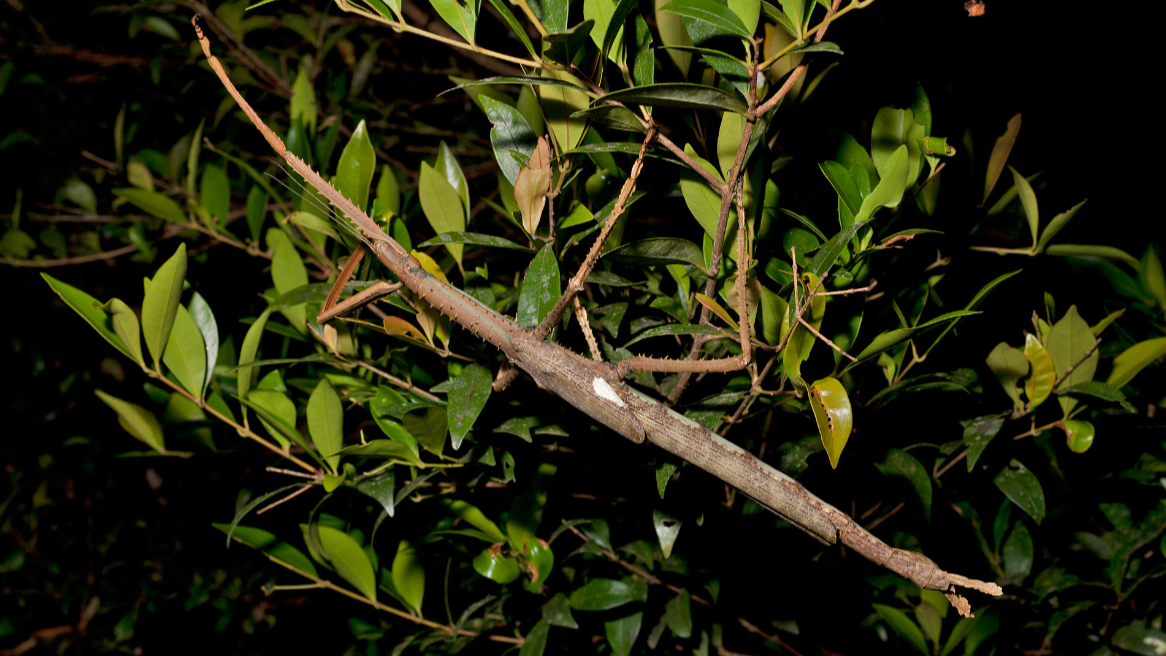A previously unknown giant stick insect has been discovered in the high-altitude rainforests of Australia — and it may be the heaviest insect ever recorded in the country.
The colossal critter, which researchers named Acrophylla alta, grows to around 16 inches (40 centimeters) long. The giant insect lives in the difficult-to-access tree canopies of tropical North Queensland, which may be the reason it has eluded scientists for so long.
Researchers documented A. alta in a recent study, published June 17 in the journal Zootaxa, and described it as a “spectacular new species.”
A new species of stick insect weighing around the same as a golf ball has been discovered in the canopies of a remote rainforest in Australia’s northeast, an Australian university announced on Thursday.Scientists believe the winged insect, Acrophylla alta, is the heaviest ever… pic.twitter.com/kacIxGOXNYJuly 31, 2025
It is not the longest stick insect in Australia — that honor goes to gargantuan stick insects (Ctenomorpha gargantua), which reach lengths of up to around 22 inches (57 cm) and live in the same region as A. alta. However, A. alta is heavier.
“There are longer stick insects out there [in the region], but they’re fairly light bodied,” study co-author Angus Emmott, a researcher at James Cook University in Australia, said in a statement. “From what we know to date, this is Australia’s heaviest insect.”
One individual in the study weighed in at about 1.6 ounces (44 grams) — roughly double that of a mature female gargantuan stick insect filled with eggs that researchers previously documented, according to the study.
Related: Invasive Asian needle ants are surging in US Southeast — and their bite can trigger anaphylaxis
The researchers discovered A. alta in the Tablelands region of North Queensland, which is 1,600 to 3,900 feet (500 to 1,200 meters) above sea level. A. alta apparently feeds on leaves in the forest canopy, where it would normally go unnoticed by humans, according to the study.
“It’s restricted to a small area of high-altitude rainforest, and it lives high in the canopy,” Emmott said. “So, unless you get a cyclone or a bird bringing one down, very few people get to see them.”
The creature’s giant size may be linked to its ability to survive in a colder, high-altitude environment. This would fit with the evolutionary trend called Bergmann’s rule, which states that animals evolve to be larger in colder climates. Not all animals follow Bergmann’s rule, and it’s uncertain how well it applies to insects, but the idea is that larger animals have a smaller surface area-to-volume ratio, which helps to reduce heat loss — something A. alta would benefit from.
“It’s a cool, wet environment where they live,” Emmott said. “Their body mass likely helps them survive the colder conditions, and that’s why they’ve developed into this large insect over millions of years.”
